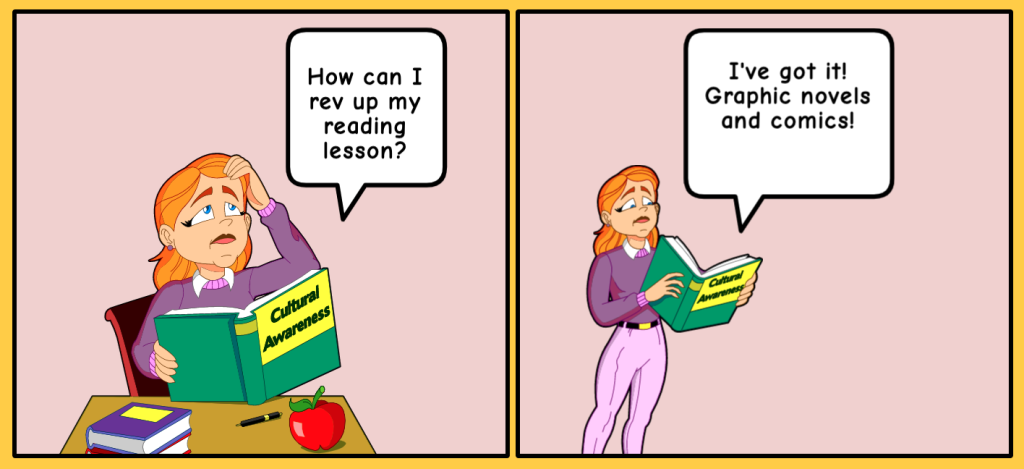It is often said that if you fail to plan, you plan to fail. One of the challenges cited by teachers in the language classroom especially is creating effective lesson plans (Velikaya, 2020).
So, what is an effective lesson plan?
Continue readingIt is often said that if you fail to plan, you plan to fail. One of the challenges cited by teachers in the language classroom especially is creating effective lesson plans (Velikaya, 2020).
So, what is an effective lesson plan?
Continue readingSeptember is here! The past eight months of warnings of artificial intelligence- or AI- generative chat calamities were heeded by some and ignored by others. Hopefully, you are one of the fortunate ones who work in an institution where AI policies, guidelines, just-in-time support and plagiarism teaching-learning plan statements are ready and accessible to supervisors, instructors and learners. If this is not your situation, this post is for you. Read on to quickly pick up some tips to cope with AI generative chat technologies while your institution works towards comprehensive strategies.

I have been hearing the word “prompt” a lot more lately. “Prompt engineering” to be exact. This recent IT term is all the buzz, and it is paired with terms like artificial intelligence (AI) and large language models (LLM). This blog post, however, is about another type of prompt: the one that language and communications teachers at the college level have been engineering since time immemorial and students write in response. And there lies the problem! The prompts are being recycled and passed on from the classroom to students’ sharing sites such as Studocu and Course Hero, and then making their way back to the classroom. It is not the type of recycling teachers want to see. Going viral is not always a good thing; it kills originality for everyone, so I have started to retreat my prompts and generate new ones. This time with a different twist.
Continue reading While some in our TESL Ontario community continue working through March Break (perhaps you had your break in February if you work in higher education), many of us will be taking a breather from our classes. Whether you will be enjoying time to relax at home, or will be getting away from it all, March Break is a great time to take a few moments to catch up on some blogs you missed.
While some in our TESL Ontario community continue working through March Break (perhaps you had your break in February if you work in higher education), many of us will be taking a breather from our classes. Whether you will be enjoying time to relax at home, or will be getting away from it all, March Break is a great time to take a few moments to catch up on some blogs you missed.
To that end, here are a few more recent blogs that we hope will be beneficial to your practice: Continue reading
In December of 2022, Cecilia Aponte-de-Hanna brought the discussion of artificial intelligence or “AI” to the TESL Ontario community with her post, AI in the Classroom: Love It or Hate It – It’s Here. Cecilia piqued our curiosity by showing us an example of a test text generation and suggested three ways that she was considering using AI with her lessons.
Continue reading
January is typically a time when people are looking forward – considering new goals and new approaches. In this post, however, I’ve decided to look back. I’m revisiting some of the information I gave in my very first professional development activity for TESL Ontario: a webinar I co-delivered in 2016 entitled Getting Animated: Graphic Novels in the ESL Classroom. My hope is that this blog will encourage readers to find ways to incorporate graphic novels and/or comics into their 2023 teaching practices.
Continue readingIf you do not have a permanent, year-round teaching contract in Ontario, I am sure that you have considered alternative careers or income streams from time to time. We all have our own reasons for our professional situations whether they are extrinsic or intrinsic. As I see it, there are five paths forward for short-term, contract ESL instructors in our sector:
Continue readingWritten by Reza Mazloom-Farzaghy, Accreditation Services Manager, TESL Ontario
Equipped with OCELT (Ontario Certified English Language Teacher) certification, job seekers have access to employment opportunities across a broad spectrum of teaching sectors in Ontario and beyond.
Continue readingGuest Contributors: Allyson Eamer, Amea Wilbur, Katie Crossman, and Jennifer Allore
This blog is the second in a two-part series on trauma in the classroom. Part 1 discusses how teachers can better facilitate learning and provide support for students who have experienced trauma, such as refugees. This segment focuses on vicarious trauma?
Vicarious trauma is a form of second-hand trauma. It is experienced by people in helping professions when they are deeply affected by their exposure to others’ trauma. The term was coined in 1995 by Laurie Pearlman and Karen Saakvitne, and originally was used to describe symptoms that clinicians experienced from working with clients with trauma experiences. Vicarious trauma has since been recognized in other fields. It can occur in various ways, such as listening to traumatic stories or viewing disturbing images.
Continue reading